Dutch Contribution to Kerala
The contributions of Dutch to Kerala had long term impacts. The Portuguese ruled Kochi for more than a century. Though the Dutch ruled for a short span, the British who came later emulated the Dutch. K.P Padmanabha Menon, K.M Panicker, Dr. T. A. Punnen and Prof. A. Sreedhara Menon had done in-depth study on Dutch.
Hortus Malabaricus
The Dutch Architecture
Nieuhof & Hendrick Adrian van Rheed
Contributions of the Dutch in Agriculture
Commerce
Health Services
Hortus Indicus Malabaricus



















































The Dutch had more tolerance towards other religions than the Portuguese. The Portuguese blindly followed the sentiments of the Catholics which created much turbulence. Tension surfaced in the name of religion. The move to convert the Latin Dioceses to Catholics led to widespread protests. The assembly of Syrian Christians in front of the cross at Mattancherry is a major event in the religious history of Kerala. These protesters, holding the free end of the rope fastened to the cross vowed not to obey the priests and bishops of Latin Dioceses. This is known as the Rebellion of the Koonan Kurishu (1653). Since then, the Syrian Christians divided into two- Romo Syrians and Jacobite Syrians. The Protestant Dutch accepted the changes in the field of science and technology. The Dutch, though initially opposed the Roman Catholics, gradually changed their policies. Thus, in 1673, a Carmalite Church was erected. In 1682, they established a seminary at Varahpuzha. Later, this came to be known as St. Joseph's Pontifical Seminary. The Protestant Dutch in Europe reconciled with the changing scenario.
The Dutch bell at the temple of Varkala (now in Thiruvananthapuram district) and the lamps in the Harippadu Temple (Alappuzha district) were offerings made by the Dutch East India Company (DEIC).
Dr. T.A. Punnen, in his essay on Dutch in Kerala, Volume I, Kerala History Association, had evaluated the administration, reforms, exports, imports, religion and culture of the Dutch. “Dutch Hegemony in Malabar” and “Lanthakkar Keralathil” were the two books authored by Punnen.
The influence of Dutch in Kerala can be grouped under the following sub-headings:
- Botany Medicinal Plants
- Agriculture
- Industry Commerce
- Medicine
- History Culture
- Administration
- Miscellaneous
Hortus Indicus Malabaricus

This is the greatest ever contribution of the Dutch to the world of plants. Hortus Malabaricus literally means the 'wealth of flora in Malabar'. Published in 12 volumes, between 1678-1703 from Amsterdam, this book is considered as the first book in which Malayalam alphabets were printed. There is a description of 780 plants in Latin with 781 diagrams in 1616 pages spreading across the 12 volumes. The names of plants are furnished in Malayalam, Konkani, Portuguese and Dutch languages. Printed in folio size, the illustrations were broad and neat. It is believed that only a few copies of the first edition were available in India. One among them is preserved at the Avittom Thirunal Granthasala at Kuriathy in Thiruvananthapuram. The library is named after the Late Prince of Travancore, Avittom Tirunal Rama Varma, who died at the age of eight. The Travancore Royal Family donated a set of Hortus Malabaricus to this library and Mathrubhumi daily took the responsibility of preserving the book. Even today, scholars visit this library to have a glimpse of Hortus Malabaricus.
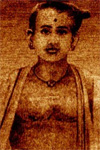
Vaidyan
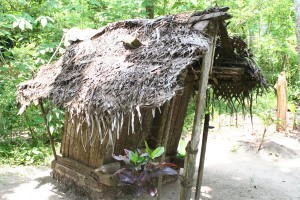
The Dutch contact with Kerala became memorable with the compilation and publication of Hortus Indicus Malabaricus or Botany of Malabar. The monumental work deals in detail with the medicinal properties of herbs and plants. The work runs into twelve Volumes with seven hundred and ninety four illustrations. It was complied under the patronage of Hendrik Van Rheede. Originally it was published in Latin language and it is believed that superstition prevented many from venturing into the translation. Several years of hard work was required for the completion of the project. Joannes Casearius, a friend of Van Rheede supervised the whole work. The services of Indians and Europeans were sought for the collection of specimens. They searched all over the country to gather fresh specimens of plants and sent them to Cochin. The Dutch commander sought the collaboration of three Konkani Brahmins- Ranga Botto (RangaBatter) Vinaique Pandito (Vibayaka Batter and Appu Botto(Appu Bhattar) and an Ezhava Ayurvedic practioner, Itty Achuthan to select and identify these plants. They revealed the names of these species and expanded their medicinal value which testified their depth of knowledge. The plants were beautifully sketched by a Carmelite priest Matthaeus as Joseph. He had drawn up the plants artistically with scientific accuracy. Owing to the precision of his drawings, there is no difficulty to identify these plants. A description of each plant was written into Malayalam. Emmanuel Carneiro, a resident of Cochin translated in to Portuguese. It was further translated into Latin by Herman Van Douep, the secretary to the Government so that the Europeans had access to the work. The work was the first attempt of a scientific research in the field. It reveals to the world the medicinal wealth of Kerala in its plants and drugs. It also enriched the botanical science with a number of Indian plant names. It remains unsurpassed even today providing basic source of information on the flora of Kerala. The book has influenced the search of later Ayurvedic physicians. The grandiose work occupies a unique place of honour among the literary and scientific works of the land.

Former Vice Chancellor of
Kerala University
In the words of Dr B. Ekbal, former Vice Chancellor of Kerala University
Hortus Malabaricus. This authentic work deals with the floral treasure and their medicinal properties. The original work in Latin, has twelve volumes. The book is not authored by a Malayalaee. This is the first ever work in which Malayalam scripts appeared in the printed form. Its first volume came out is 1678 at Amsterdam. It took another 133 years for the next Malayalam work in print –ie -Malayalam Bible printed at the CMS Church Mumbai, by Dr Buchanan. Kerala University published the English version of Hortus Malabaricus on its 325thanniversary in 2003 and followed by its Malayalam version in 2008. The efforts were taken by Dr K S Manilal. This is the second magnum opus produced by the Kerala University, the first being the Sahithya Charithram by Mahakavi Ulloor.
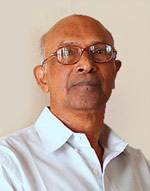
Why or what are the qualities which make this a great work surviving centuries?It has fine details of the medicinal plants. Beyond that, it has recorded the role and influences of imperial powers, the culture, the society, and the history of the militia prevailed then in Kerala. The Kolezhthu used by Itti Achuthan, the Arya script by Emmanuel Cornier and their valuable remarks reflects the evolution of Malayalam language also. When we analyse the history of printing we cannot but quote Hortus. Hendricks Andrea dean Van Reede (1636-1691) the Dutch Governor of Kochi in the second half of the 17th century is the author of Hortus Malabaricus. The work is immensely rich with knowledge of the medicinal plants of Asia in general. The medicinal qualities of the plants and the method of treatment are given at length. Itti Achuthan of Kollat family in Cherthala, a renowned physician had supplemented and shared his knowledge on medicinal plants. In those days, all write ups on science were published only in Latin-until Sir Isaac Newton brought out his work on Optics in English in 1704. This might be the reason why Van Reede opted for Latin. The original work has 1616 pages containing descriptions on 742 plants with 791 illustrations.
The first chapter is on coconut palm and its medicinal value. The decoction of the root of coconut and dry ginger in boiling water is good remedy for fever-the book says. The pulp of the leaves mixed with coconut oil stops bleeding. The second chapter is on areca nut palm, followed by sugar cane, date palm, plantain, bamboo etc. The names of the plants in Malayalam were transliterated into Portuguese, then to Dutch and finally to Latin. Distortions of names in such circumstances cannot be ruled out. Dr Manilal has overcome such difficulties. The printing process began with the designing of text and illustrations on copper sheets. Each page carried the names of the species in Malayalam, Arabic, Roman and Devanagiri scripts. The complete illustration of each plant made identification easier.
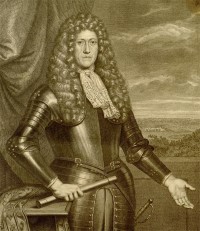
Reede argued that Kerala was the best place for medicinal plants and the Dutch Military were benefitted by it. Ultimately Kochi was made the Dutch capital. Earlier translation efforts were not fruitful. In 1720 two volumes were translated into Dutch. In 1774 John Hill translated one volume into English. However the credit of translating all the 12 volumes goes to Dr K S Manilal and the Kerala University. Hendrik Adriaan Van Reedee and Hortus Malabaricus: A contribution to the History of Dutch colonial Botany: J Heniger; AA Balkema, Boston 1986 is the biography of Van Reede. This book also has to be translated into Malayalam and English as an appended reference resource.
Van Reede died while at Gujarat and his epitaph may be found somewhere in Surat. Still there are so many misgivings on this great work especially on the contributions of Itti Achuthan. Dr Manilal has authored a hand book on this issue titled Hortus Malabaricus and Itti Achuthan. (Mentor Books, Calicut Distribution: P K Brothers Calicut 1996). A collection of essays on Hortus Malabaricus titled Botany and History of Hortus Malabaricus: Routledge London 2004 is edited by Dr Manilal.
The founder secretary of the Hortus Malabaricus Trust Cherthala A N Chidambaran has authored a book Hortus Malabaricus and Itti Achuthan (Kerala Sahithya Academy, Thrissur 2011). Joseph Antony has written a book on the efforts taken by Dr Manilal-“Haritha Bhoopadam-K S Manilal and Horthus Malabaricusintae rendam piraviyum” (Mathrubhumi books Kozhikode 2012). (From Grandhalokam)
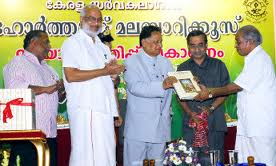
Dr Manilal commenced his research on Hortus Malabaricus in 1964 and three decades later Dr B. Ekbal, former Vice Chancellor of Kerala University assured Dr Manilal that Kerala University would undertake the publication of the work. Thus the English version gained news value. Dr A P J Abdul Kalam, the then President of India released the English version at the Rashtrapathibhavan, New Delhi. The President informed that a division of Hortus Malabaricus would be opened at the Mughal Gardens of the Rashtrapathi Bhavan. Years later, the Malayalam version of this work was published by the University of Kerala.
Vaczy, C., Hortus Indicus Malabaricus and its importance for the Botanical Momenclature, pl.28.
Manilal, K.S, The Epigraphy of the Malayalam Certificates in Hortus Malabaricus, p.110.
Selections from the Records of the Madras Government: Dutch Records No.13.
Manilal, K.S., Botany and History of Hortus Malabaricus, New Delhi, 1980, p.11.
The Dutch Architecture
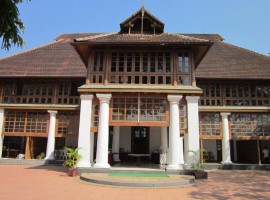
The Dutch East India Company left behind certain important monuments as the vestiges of their occupation of the land of Kerala. The city of Cochin, the headquarters of the Malabar Command still bears the marks of the Dutch power, though their domination had gone forever. The Bolgatti palace, an impressive building constructed at the erstwhile Ramanthuruth of the Vembanad Lake by the Dutch in 1774 for their high officials still remain the greatest replica of the Dutch hegemony in Kerala. Following the departure of the Dutch it went under the British and thereafter under the Raja of Cochin and the Government of Kerala respectively. At present it is placed under the immediate supervision of the Kerala State Department of Tourism. Some of the churches and buildings still exist in Cochin are reminiscent of the Dutch contact with Kerala. The Dutch palace at Mattancherry is one of the oldest buildings built by the Europeans in India. The interior is decorated with mural paintings. The Dutch were fond of having country houses on some of the picturesque island in the back waters. They widely woods for construction purposes and they tried to combine the European style with the traditional style of Kerala architecture. The Governor and many of the upper strata of society had garden houses. A coat made out of medicinal plants for the Governor is still exhibited at the Padmanabhapuram palace which once remained an integral part of Kerala. Many improvements and additions were made with the lapse of time. In Chennamangalam the Dutch constructed another building for Pailath Achan. They also constructed the famous palace known as Kalikotta for Saktan Tampuran (1790-1805) at Trippunithura. The grand massive structure was made in the Dutch architectural style.
The Dutch pulled down the old Portuguese fort and built up a strong fort in Cochin to suit their need and convenience in 1697. During the Dutch occupation of Cochin they made several changes in the town. Many houses were built in the gabled architecture. Quays were erected for the loading of ships and vessels. The Dutch introduced many amenities in the town. In 1721 there Dutch built a cemetery in Fort Cochin. After the burial of the only survivor of the Dutch family in the cemetery it was declared a protected monument. The Dutch changed the names of the streets once inhabited by the Portuguese. Among them were de Linde Straat (Lime Tree Street), de Lily Straat, Heere Stratt (Gentleman street), de Petercile Straat (Parsely Street), de Bree Straat (Board Street), de Osse Straat (oxstreet), de Burger Straat (Citzen Strret), de Smee Straat (Smith Street) and de Kalven Straat (Calf Street). The Dutch named the boat jetty as de Boom port since its entrance was protected by a beam lying in the water. Thus in many instances the Dutch East India Company left their imprints on the soil of Kerala. Now most of their forts and castles were in ruins and some of them disappeared. Their places of worship continued to flourish under the management of other Christian denominations.